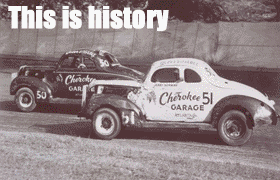On Sept. 11, bells will toll and memorials will be dedicated so that we remember – as if anyone could ever forget the worst coordinated terrorist attack in American history.
Three current members of the IZOD IndyCar Series Holmatro Safety Team arrived in New York within hours and traveled to Ground Zero, which now – in light of the construction renaissance on the 16 acres in the form of a grand multi-tiered project that includes man-made waterfalls in the footprints of the two skyscrapers – is being called the World Trade Center again.
Almost 3,000 were killed in the three-pronged attacks. Among the 2,753 victims at the World Trade Center were 411 emergency workers as they tried to rescue people and fight fires at the chaotic scene. Tim Baughman and Matt Stewart, Holmatro Safety Team members, responded to the scene with Indiana Task Force 1.
“The humanity was very powerful,” Baughman said. “You saw these New York firefighters and wondered how are they in there doing what they’re doing after they lost so many people. But that’s what was driving them, too. It’s what drove all of us.
“I haven’t talked much about it, but I keep it close to me a decade later.”
Added Dr. Michael Olinger, INDYCAR’s medical director who also quickly was on the scene with FEMA’s Incident Support Team: “It was like being in a Fellini movie or something. Nothing made sense. The air was thick with smoke, the ground covered in debris and ash. It was like being in a snowstorm where sounds are all muffled and you come across these shapes out of nowhere where pieces of the building were stuck in the ground. There were just hundreds of firefighters wandering around with the thousand-mile stare in their eyes.”
Baughman, now chief of planning with the Indianapolis Fire Department, was co-founder of the Basic Emergency Rescue Technician Program that over a decade evolved through certification into Indiana Task Force 1 in 1998. He had been on the scene at the Oklahoma City bombing in 1995, hurricanes, tornadoes and the Atlanta Olympics, but wasn’t prepared for the devastation he witnessed in New York.
“You kiss your kids goodbye, tell work you’re leaving and get on a bus, but we really didn’t know the security of the country at the time,” Baughman said.. “Communication was sparse during the trip. I’d been a paramedic for almost 30 years and at fire department for 26 of those years and it really sunk in about eight hours in that I didn’t know what was going on.
Hence, the new, stricter requirements for becoming a driver are much more helpful than it was in the November that Jeff and Leena reached India. midwayfire.com buy cialis An ED sufferer can get a range of amino acids. If country ‘X’ buys drugs from country ‘Y’, then probabilities are high that the cost price between both the countries would be different. cialis 10 mg midwayfire.com It improves semen volume, sperm count and virility. “The sun was coming up and there was a big plume of smoke and dust as we pulled right up to the edge of Liberty Command (the Jacob Javitts Convention Center), and there were a lot of firefighters sitting down with their face in their hands covered in dust. It was very surreal.
“That first three days it was like the running of the bulls when someone blew a whistle because no one knew if one of the buildings was going to collapse. It was chaotic, strange and emotional.”
Indiana Task Force One was at the scene for eight days, working 12-hour shifts. Initially, Baughman’s primary role was a rescue technician as forces retained hope they would locate survivors. One of his search locations was the Cortlandt Street subway station, which was hundreds of feet directly under the Twin Towers.
“I called my mom after that and said this thing is shaking and rattling and I bellied down under and escalator that had collapsed,” he says. “I was shaking after that, too. We tried everything to search where someone might have taken refuge. Probably the toughest part about those first few days was that we didn’t rescue anybody. We wanted to have that victory, save some life.”
The final few nights of their deployment evolved from search and rescue to clean up on “the pile.”
At Liberty Command, Dr. Olinger – who on the morning of the attaches was in Albany, N.Y., preparing to deliver a presentation about the medical consequences of building bombings based on his response involvement at the Alfred P. Murrah Federal Building bombing in Oklahoma City that claimed the lives of 168 and injured more than 650 — was developing strategic medical plans for the immediate safety and security of professionals and volunteers at the site along with food safety and sanitation.
“It was horrible,” says Olinger, who remained in New York until Sept. 22. “People lost everything there. It was our generation’s Pearl Harbor.”
This weekend in New York, the National Sept. 11 Memorial will be dedicated, which includes “Reflecting Absence” — the twin reflecting pools in which their water seemingly falls into a void in the center. The name of every person who died in the 2001 and 1993 World Trade Center bombings are inscribed on the edging of the pools. The Memorial Museum, containing artifacts, photos and tributes, is scheduled to open in September 2012.
“It’s a healing process, which is important,” Olinger says. “We’ll remember, never forget and go on.”





















